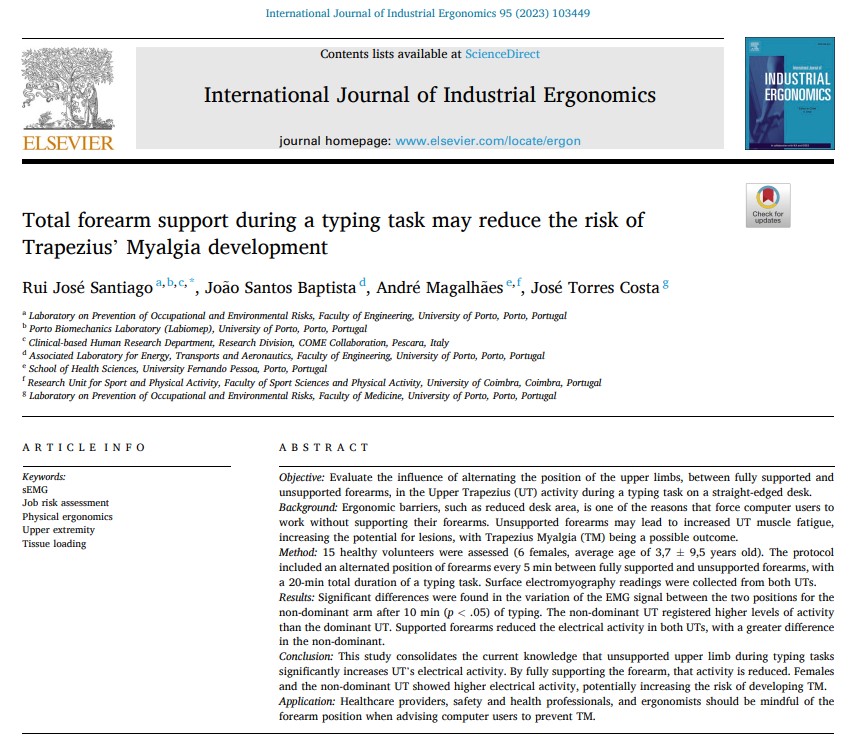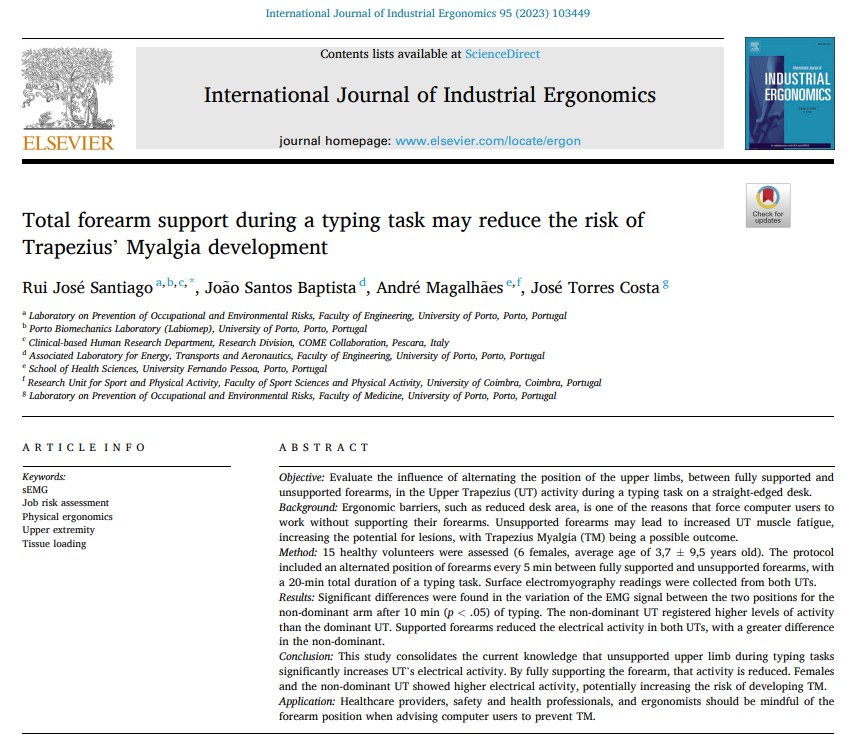Total forearm support during a typing task may reduce the risk of Trapezius’ Myalgia development

Click here for link to the published article page
Abstract
Objectives
Evaluate the influence of alternating the position of the upper limbs, between fully supported and unsupported forearms, in the Upper Trapezius (UT) activity during a typing task on a straight-edged desk.
Background
Ergonomic barriers, such as reduced desk area, is one of the reasons that force computer users to work without supporting their forearms. Unsupported forearms may lead to increased UT muscle fatigue, increasing the potential for lesions, with Trapezius Myalgia (TM) being a possible outcome.
Methods
15 healthy volunteers were assessed (6 females, average age of 3,7 ± 9,5 years old). The protocol included an alternated position of forearms every 5 min between fully supported and unsupported forearms, with a 20-min total duration of a typing task. Surface electromyography readings were collected from both UTs.
Results
Significant differences were found in the variation of the EMG signal between the two positions for the non-dominant arm after 10 min (p < .05) of typing. The non-dominant UT registered higher levels of activity than the dominant UT. Supported forearms reduced the electrical activity in both UTs, with a greater difference in the non-dominant.
Conclusion
This study consolidates de current knowledge that supported upper limb during typing tasks significantly increases UT’s electrical activity. By fully supporting the forearm, that activity is reduced. Females and the non-dominant UT showed higher electrical activity, potentially increasing the risk of developing TM.
Application
Healthcare providers, safety and health professionals, and ergonomists should be mindful of the forearm position when advising computer users to prevent TM.


